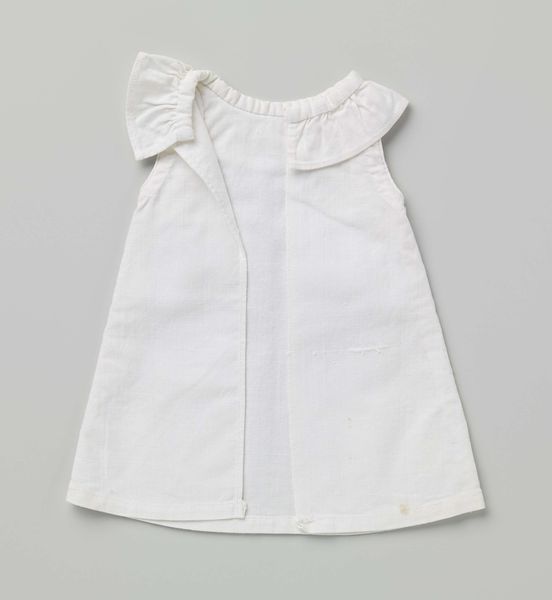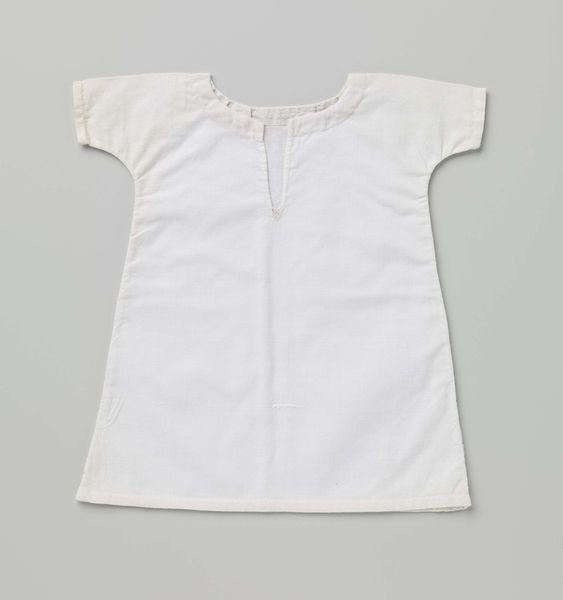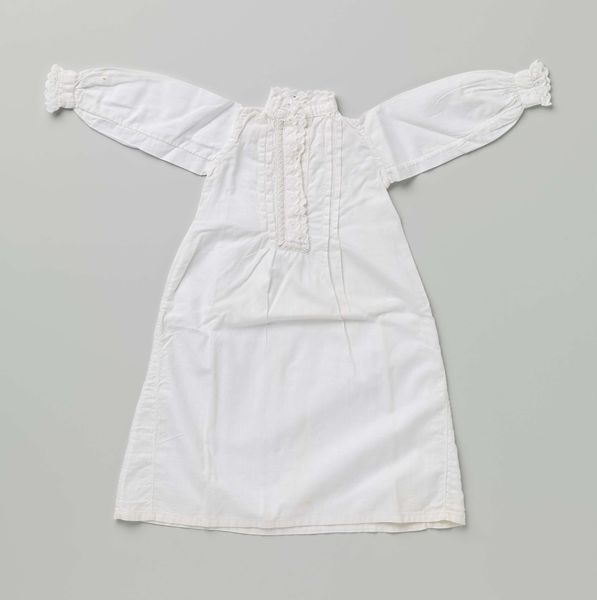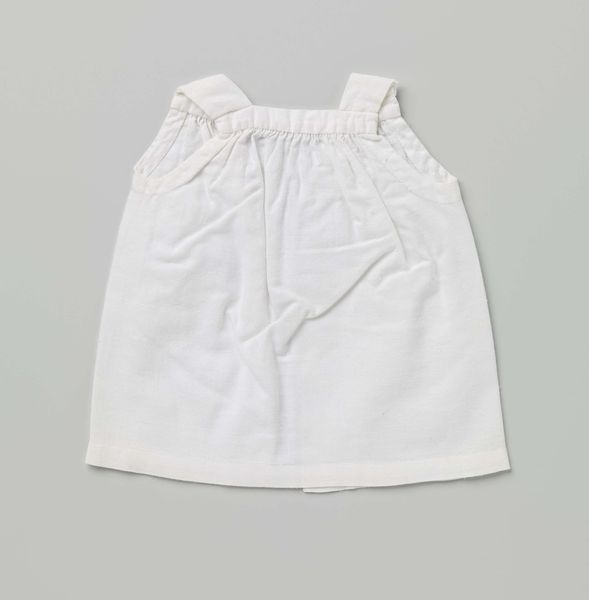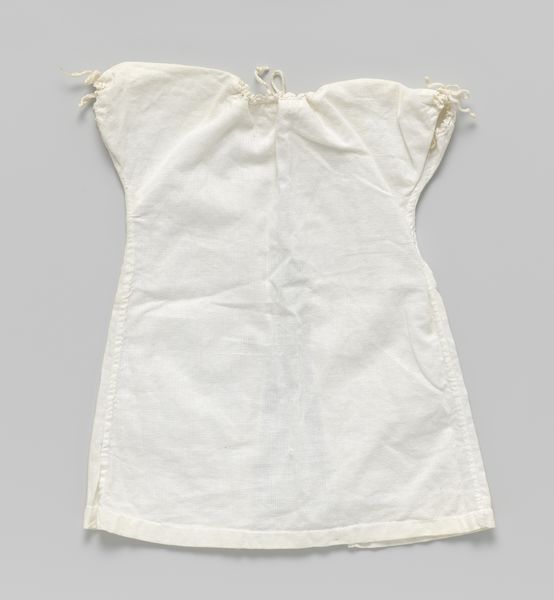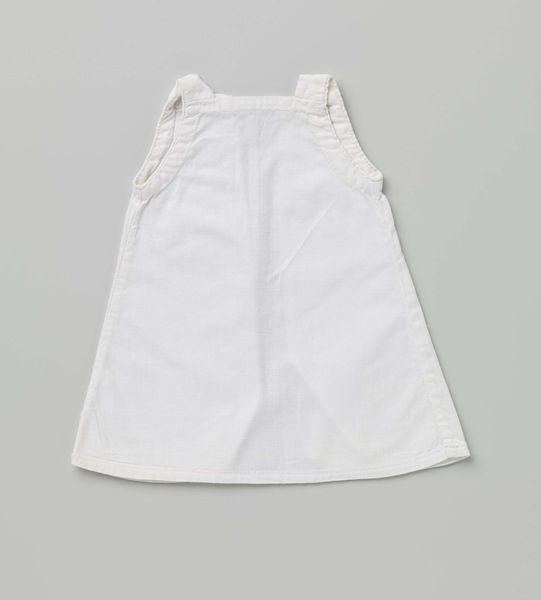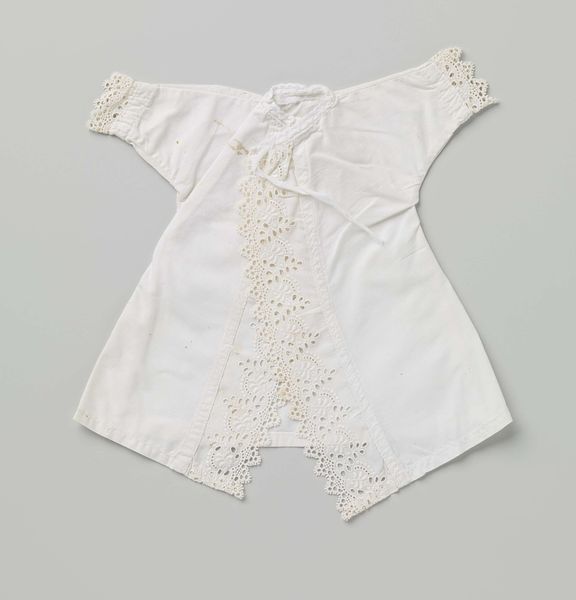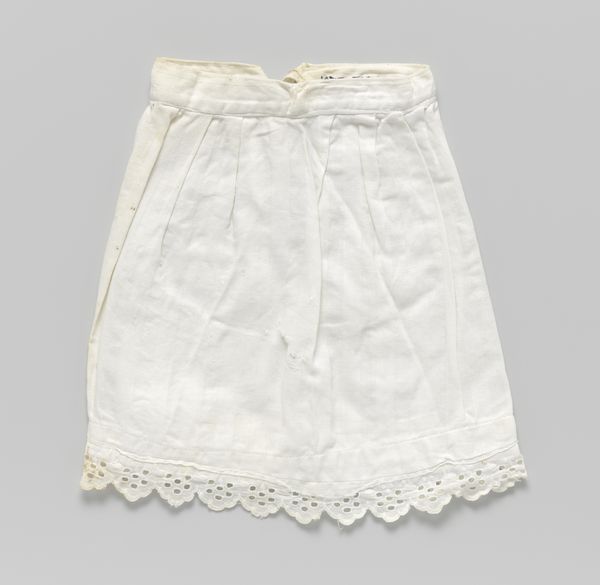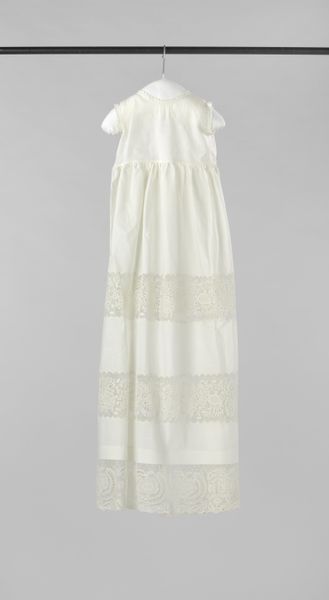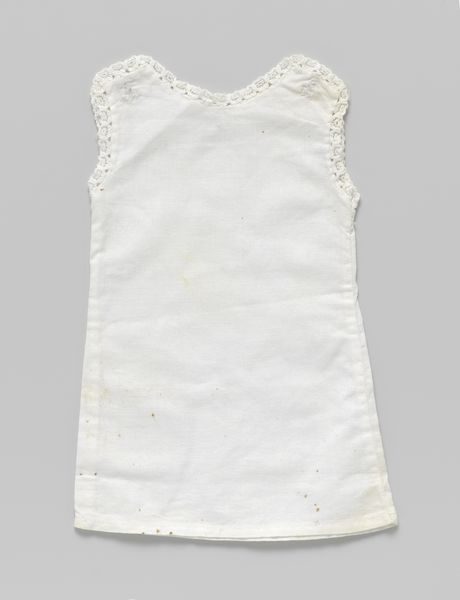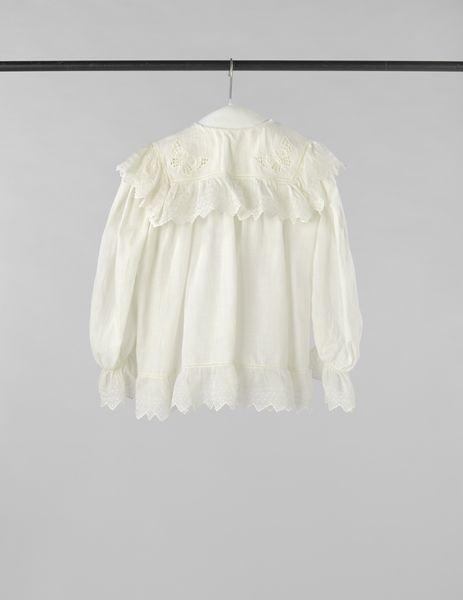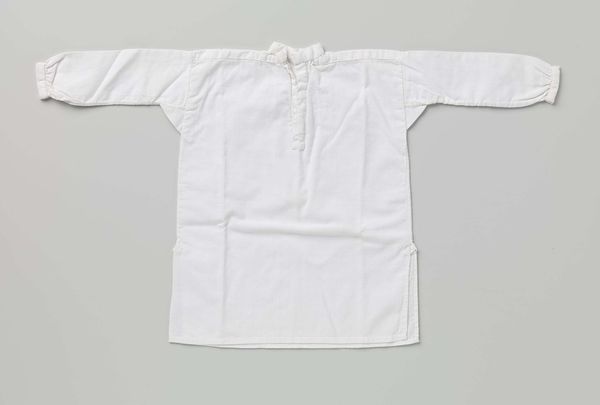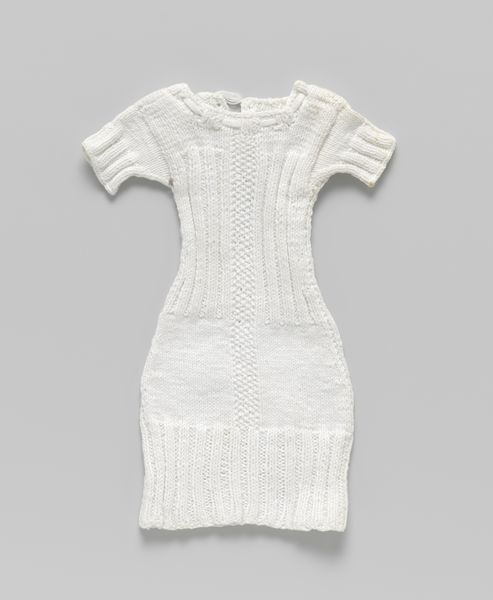
fibre-art, textile, cotton
#
underwear fashion design
#
fibre-art
#
fashion mockup
#
textile
#
clothing promotion photography
#
fashion and textile design
#
clothing photography
#
clothing theme
#
sportswear sale photography
#
clothing photo
#
cotton
#
imprinted textile
#
clothing design
Copyright: Rijks Museum: Open Domain
Editor: We're looking at a “Hemd met halve mouw, handwerk,” or short-sleeved, handmade shirt, created sometime between 1888 and 1894 by G. Glas. It's deceptively simple—just a white cotton shirt. There's something stark about its plainness. How do you interpret its significance? Curator: This "simple" garment speaks volumes about social and institutional history. Consider the late 19th century. The Industrial Revolution meant mass-produced clothing was becoming more accessible, challenging handmade items. The whiteness is also important; it represents cleanliness, a virtue increasingly associated with the rising middle class and domestic ideals. Editor: So, this wasn’t just any shirt, it's making a statement? Curator: Exactly. It’s not merely functional; it embodies cultural values. Was it meant for everyday wear, or was it perhaps part of a trousseau, meant to project purity and domestic capability? Who owned it and how did their social standing shape their choice to own and use such a basic piece of apparel? Think about the labour involved—someone carefully crafted this. What does that labour signify in an era of industrialisation? Editor: It does seem odd to have a simple garment in cotton to require the handwork label and to be preserved for posterity, especially given that we can associate machine made versions being much easier and cheaper to come by. Curator: Precisely. Its survival prompts further questions about museums, too. What choices lead us to preserve certain items over others and what do they come to represent over time, through the museumification process itself? Editor: That really shifts my perspective. I initially saw it as an artifact, but it’s really a symbol loaded with socio-economic meaning and reflective of the institution that preserved it. Curator: Agreed. This isn't just about clothing; it's about understanding how clothing reflected and shaped social dynamics and continues to shape our understanding in institutions through curatorial choices. Editor: This piece carries so much more weight now; thanks for pointing out the layered historical implications.
Comments
No comments
Be the first to comment and join the conversation on the ultimate creative platform.
